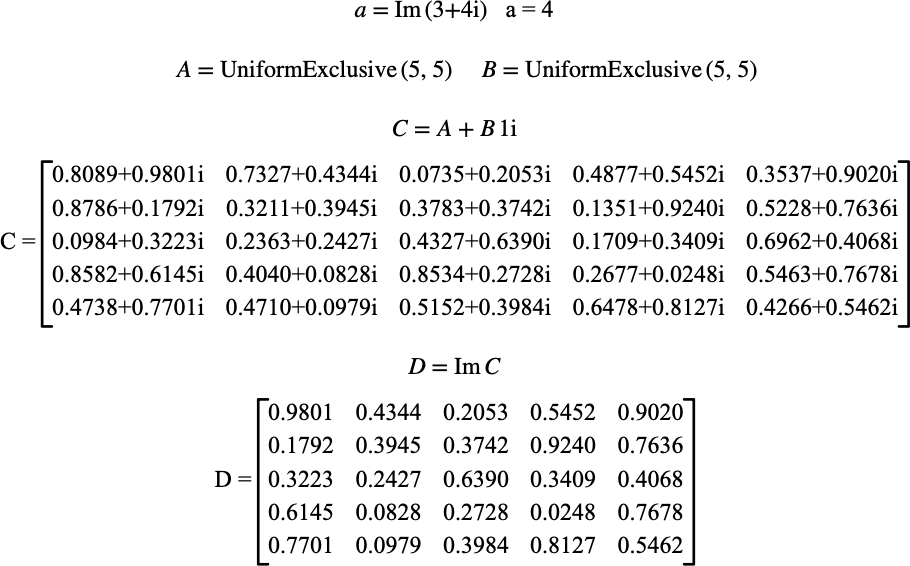\(\text{Im}\)¶
You can use the \(\text{Im}\) function to obtain the imaginary portion of a value. When applied to a matrix, this function will return a real matrix holding just the imaginary portion.
You can use the \im backslash command to insert this function.
The following variants of this function are available:
\(\text{scalar } \text{Im} \left ( \text{<value>} \right )\)
\(\text{matrix } \text{Im} \left ( \text{<matrix>} \right )\)
This function will return zero or false when applied to a boolean, integer,
or real value. Similarly, if the supplied parameter is a boolean matrix, an
integer matrix, or a real matrix, the function will return a zero matrix of
the same type and size as the supplied matrix.
Figure 157 shows the basic use of the \(\text{Im}\) function.

Figure 157 Example Use Of The Im Function¶
